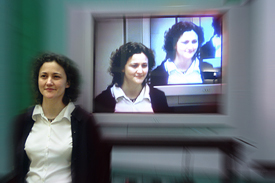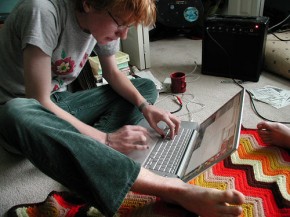Building an Online Community: Using Student Online Behaviour to Guide Teaching Practice
As an instructor, have you ever created an online discussion area, encouraged discussion amongst the class, yet find that almost no one participates? Whether it’s a distance education or an on-campus course, more and more instructors at UBC are using online components like WebCT CE and WebCT Vista to supplement their teaching.
HELP IS AVAILABLE: Student Engagement and the Transition to the Professional Workforce
Gone are the days where one stays with the same company for their whole life, so post-secondary institutions must start preparing students for a life of perpetual change. Post-secondary institutions need to engage students in enriching educational experiences while providing a supportive campus environment where resources can easily be found and where students can learn about making the transition into the professional workforce.
Help, I'm an Online Learner and Don't Know What to Do!
The four panelists walked through the Orientation to Learning Online website, which has been developed to give students and instructors a valuable resource to learning online. Discussion revolved around the benefits of collaboration and content-sharing in the context of UBC’s Orientation website, and ways in which faculty and students can make use of its content.
Q&A – LCIN Listens, and Shares
The LCIN stands for “Leading Campuses International Network”. The LCIN (“listen”) part is kind of meant to be fun…this is a group that has some good ideas to share and wants to hear more from other practitioners. When we thought about the name, we wanted to capture the qualities of the institutions represented in the program.
You Have a Right to Know!
A recent trend that has developed over the last few years has been an increase in people’s expectations towards getting access to information. With so much information available on the Internet, people are developing an attitude that they have a “right to know.” John Willinsky and Brian Lamb discussed opportunities and initiatives resulting from the emergence of open source, open access, and open educational resources that are readily available today.
Tag This! How UBC Researchers are Merging Blogs, Bookmarking, and More for Learning and Community Building
Blogs, tagging, online identities, social bookmarking – these social software practices are hot technology trends with millions of people flocking to web sites like myspace.com, flickr.com and del.icio.us. Now UBC researchers David Vogt and Lee Iverson are looking at ways to bring these types of software together under one umbrella.
Powered by Students: How a Student-Led Pilot Project Re-Creates Ancient Worlds with Modern Technology
UBC students led a pilot project that used virtual models of Ancient Greek architecture to show what life might have been like in Athens in fifth century B.C. They re-created their own 3-D models of buildings in the Acropolis and the Agora based on their own research, using the same kind of technology used to create popular 3-D video games.
The Blogging Curve: Possibilities for Integrating Weblogs in the Classroom
Blogs can be used in a range of ways, from a tool to manage course information, demonstrating professional tools and increasing student ownership in the classroom, to meeting learning objectives, Simon Neame, an adjunct instructor with UBC’s School of Library, Archival and Information Studies (SLAIS) has discovered.
How Can Smaller Faculties Use Video-Conferencing to Increase Teaching and Learning Opportunities for Students and Faculty?
Sandra Schinnerl, Associate Director at UBC’s Faculty of Forestry and her team faced 2 key challenges when they decided to use video-conferencing as a means of increasing course offerings and learning opportunities for graduate students. Find out about their approach, advice, and tips and resources on video-conferencing.
Jim Berger – What's the Secret to Start Teaching Online?
Jim Berger redesigned Biology 200 to use a combination of in-person class time and an online component. The in-person time divided into two parts: Jim lectures fifty per cent of the time and the other half is workshop time, where students work together in groups on problem solving.










